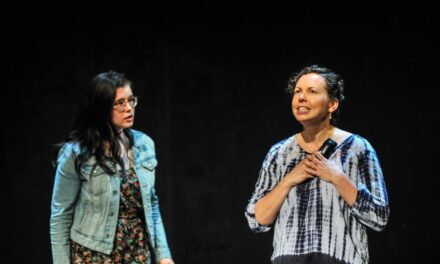Although tragedy is not usually the preferred companion for hard times, Anglophone pop culture gravitated towards King Lear through memes and quotes during the global pandemic of COVID-19. On Shakespeare’s birthday, April 23, in 2020, at the height of the pandemic, Canada’s Stratford Festival kicked off their online film festival with artistic director Antoni Cimolini’s 2014 King Lear which became their most-watched video. For context, by the end of 2020 Stratfest@Home has attracted 2 million viewers from 103 countries.
Digital videos are nothing new. Long before the global pandemic of COVID-19, digital videos have helped Shakespeare gone viral around the world. The rise of global Shakespeares is inseparable from the prevalence of digital video on commercial and open-access platforms, because these platforms provide inter-connected, instantaneous forms of communication. Viewing digital Shakespeare as an asynchronous, performed event can help us connect live performances to the concepts of rehearsal and re-play.
The outbreak of the global pandemic of COVID-19 caused by SARS-CoV-2 coronavirus in early 2020 closed live theatre events worldwide, but the crisis – during which global travel and national borders were shut down – also ushered in a new phase of globalization fuelled by digital videos as at-home audiences took to streaming to engage with Shakespeare. The pandemic has led to a proliferation of born-digital and digitized archival videos of Shakespeare in Western Europe, Canada, the UK, and the US.
Digital streaming – live or pre-recorded, synchronous or asynchronous – has helped Shakespeare go viral on a global scale, and the pandemic is accelerating that process. Like any virus, global Shakespeares adapt quickly to their new, digital host environment. In tandem with the spread of coronavirus, there is a global viral spread of Shakespeare via digital videos that carry site-specific meanings with them in disembodied forms. An idea or motif goes viral when a large number of people share it within a short period of time on social media. This leads to a sharp acceleration in the exposure of the given idea. In the twenty-first century, this process is fuelled by digital tools of networking. As a comforting, familiar go-to-material for uplifting the spirits, Shakespeare skyrocketed to the top of the list of digital performance events during the pandemic in the forms of memes (e.g. Shakespeare wrote King Lear during the plague), quotable quotes, performances of select scenes, and full productions.
The lockdown and stay-at-home orders are measures to contain the spread of the virus. They have also accelerated digital globalization, redefining liveness along the way. The lockdown motivates at-home audiences to transcend their temporality by engaging in escapism through virtual theatre.
Equally important are the spatial constraints of the viral containment measure. Mobility – even within one’s neighborhood – is severely limited. Audiences who are now “bounded in a nutshell” (Hamlet, Folio 2.2.252) seek virtual connections that transport them beyond their now fixed geographic locations to an alternative universe.
In this context, digital videos do not so much replicate theatrical experiences as they enable experiential and affective quality on the small screen. During the crisis, ongoing at the time of writing, Western European and North American amateur and professional groups from school projects to New York’s Public Theater performed live using video conference tools such as Zoom and social media platforms such as TikTok, making all the world their digital stage.
Some of them had a global, multilingual audience in mind. The Public Theater’s online initiative, Brave New Shakespeare, posted their actors reading Romeo and Juliet act 2 scene 2 in multiple languages and invited the general public to share their own.
Actors and audiences also flocked to participatory events (The Tempest, “live, interactive, and in your living room”, hosted by Creation Theatre Company and Big Telly Theatre Company) as well as virtual discussion of streaming to overcome the isolation of physical, social distancing in the era of COVID-19 (as in Fundación Shakespeare Argentina’s play readings on Facebook). Shakespeare Theatre Company in Washington, DC, hosted weekly virtual events entitled “Shakespeare Hour LIVE!” which featured STC’s artistic director Simon Godwin in conversation with actors (Liev Shreiber, F. Murray Abraham, Stacy Keach, and others) and scholars (Stephen Greenblatt, Jonathan Bate, and James Shapiro).
To maintain or increase their visibility, and as part of their fundraising campaigns during COVID-19, theatre companies broadcast live or asynchronously to audiences around the world. Professional companies released pre-recorded videos on a time-limited basis at pre-scheduled intervals, replicating the ephemerality and limited availability of live theatre. The pressured – through asynchronous – schedule drummed up excitement and upped the ante of competition against other companies who had also gone digital. A majority of these events were free, while others sold tickets at a fraction of the price for live shows. The Blackfriars Playhouse of the American Shakespeare Center sold tickets to shows in their 2020 season on BLKFRSTV, a new streaming platform, which “bring[s] the Playhouse to you, since audiences can’t come to the Blackfriars.” Other key players in digital video broadcasting during the pandemic included the Berliner Ensemble, La Comédie-Française, Shakespeare’s Globe in London, Royal Shakespeare Company, National Theatre, Stratford Festival in Canada, and the Folger Theatre.
Despite the challenges that the pandemic has brought to live theatre, it has also helped a few companies reach mass global audiences on an unprecedented scale. As of 18 May 2020, the Globe’s YouTube channel had attracted 1.9 million viewers for all of their videos, while the Donmar Warehouse’s Coriolanus, starring Tom Hiddleston, on National Theatre Live garnered more than half a million views and raised US$20,691 between 4 and 11 June 2020.
The number of views far exceeds the number of audiences a live production could ever reach within the same one-week period. The Donmar auditorium has only 251 seats; even the National Theatre has a total of only 2,417 seats across its three venues.
Not all productions translate well to the streaming format on the small screen, but digital broadcasting is deployed as a symbolic means to maintain the connection with the companies’ current and future patrons and, more importantly, to encourage donation. It is a crucial tool to help theatre companies remain relevant in a time of crisis. In its bid for support from the UK’s Department for Digital, Culture, Media, and Sport, the London Globe has cited a large number of views of their free YouTube channel as evidence of the need for arts and culture during crises. Largely supported by self-generated revenue and with a predominantly international tourist audience, the Globe is unusual among major UK theatres in not being funded by Arts Council England, leading to concerns early in the crisis about its financial precarity.
Digital videos, obviously, are not a magic bullet, as they require substantial bandwidth and resources to access. However, despite the challenge of maintaining net neutrality and equal access, generally speaking, in a decentralized model of networked, digital culture, the users have more direct engagement with, if not control over, multi-modal representations of events.
The rise of performances on the small screen has important implications for global Shakespeares. The duality of text and performance is no longer a problem to be diagnosed, but rather an opportunity to be explored.
While in the 1990s one typically encountered Shakespeare for the first time through film or theatre, in our times the initial encounters occur predominantly on digital platforms in the form of video clips, memes, or quotes. It has become more common for non-professional audiences to encounter Shakespeares in fragmented forms.
This is an adapted and abbreviated version of Alexa Alice Joubin’s “Global mediation: Performing Shakespeare in the age of networked and digital cultures,” The Arden Research Handbook of Shakespeare and Contemporary Performance, ed. Peter Kirwan and Kathryn Prince (London: Bloomsbury, 2021), pp. 132-150.
This post was written by the author in their personal capacity.The opinions expressed in this article are the author’s own and do not reflect the view of The Theatre Times, their staff or collaborators.
This post was written by Alexa Alice Joubin.
The views expressed here belong to the author and do not necessarily reflect our views and opinions.


















